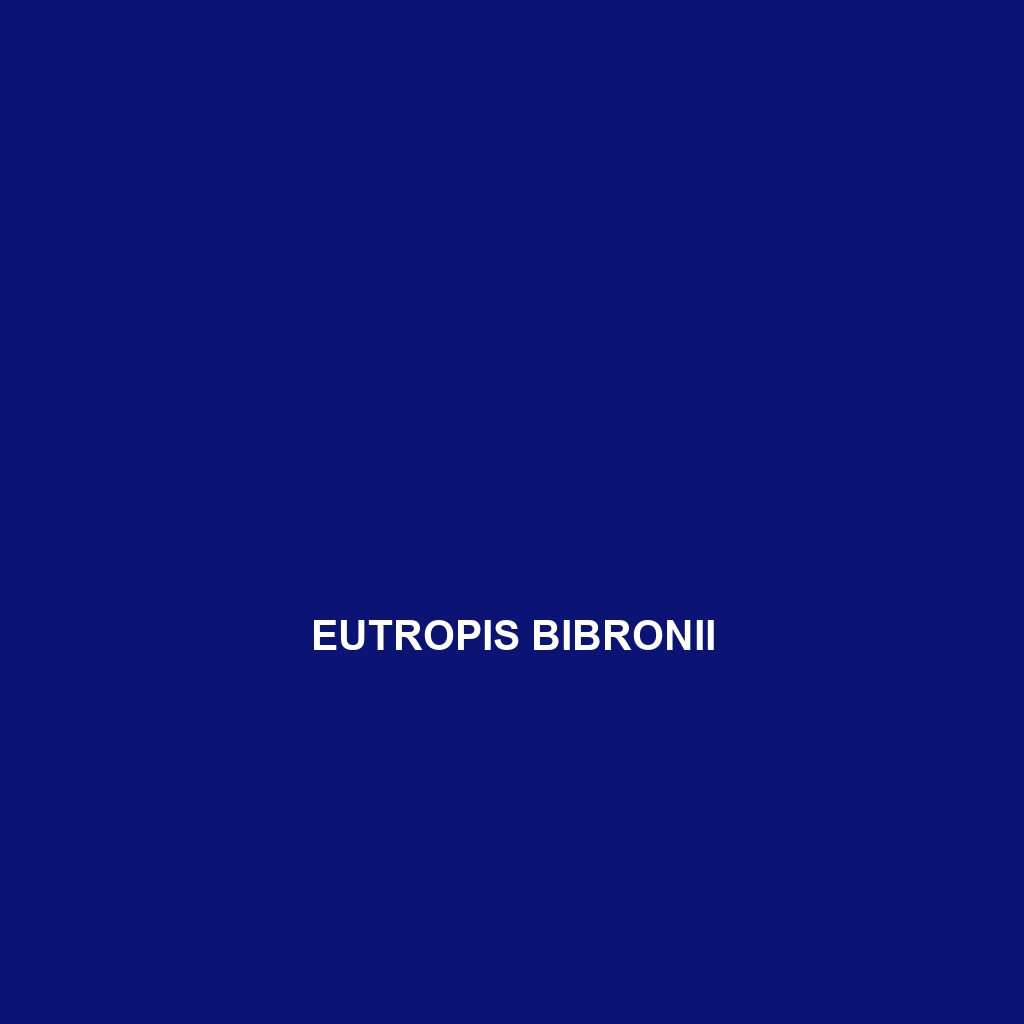Common Name
Eutropis bibronii
Scientific Name
Eutropis bibronii
Habitat
Eutropis bibronii, commonly known as Bibron’s Skink, thrives in a range of habitats primarily found in the regions of Southeast Asia, including countries like Thailand, Malaysia, and Indonesia. This species predominantly inhabits tropical rainforests, where humidity levels are high and vegetation is lush. It can also be spotted in savannas and edges of temperate forests, adapting well to environments with a variety of microclimates. The typical climate is warm and humid, often characterized by heavy rainfall, which directly influences the availability of food and shelter for this species. Additionally, Bibron’s Skink is often found in disturbed areas such as agricultural fields, displaying its ability to adapt to changing environments.
Physical Characteristics
Eutropis bibronii is a medium-sized skink, with adults generally measuring between 15 to 25 centimeters (6 to 10 inches) in length. This species has a streamlined body that aids in its burrowing and climbing activities. The coloration of its scales is a key characteristic, usually displaying a combination of brown, black, and tan patterns, which provide excellent camouflage against the forest floor. The scales are smooth and glossy, which not only enhance its aesthetic appeal but also reduce friction as it moves through its habitat. A distinctive feature of this skink is its long tail, which can regenerate if lost, an adaptation that serves as a defense mechanism against predators.
Behavior
Diet
Eutropis bibronii is primarily an insectivore, feeding on a variety of insects such as ants, beetles, and other small arthropods. The diet may occasionally be supplemented by small fruits and plant material, categorizing their eating habits to a mostly omnivorous range. Feeding patterns are opportunistic; the skink forages during daylight hours, using its keen vision to spot prey among the foliage and underbrush. The dietary flexibility of Bibron’s Skink enables it to thrive in diverse environments, particularly where insect populations fluctuate.
Reproduction
The reproductive cycle of Eutropis bibronii typically begins with the onset of the wet season, which corresponds with the increase in food availability. Mating occurs in the spring months, followed by a gestation period of about 60 to 90 days. Females are known to produce clutches of 4 to 14 eggs, which they lay in hidden nests among leaf litter or beneath rocks. The hatchlings are independent from birth, equipped with all necessary survival skills. Parental care is minimal, with the mother typically leaving the eggs after laying. These skinks can reach sexual maturity within a year, contributing to population sustainability in their natural habitats.
Conservation Status
Currently, Eutropis bibronii is classified as Least Concern according to the IUCN Red List. However, habitat loss due to deforestation, agricultural expansion, and urbanization poses significant threats to its populations. Conservation efforts are underway in some regions to protect the natural habitats and promote sustainable land-use practices. Monitoring of the species is essential to ensure that it does not approach a threatened status in the future as environmental pressures continue to mount.
Interesting Facts
One fascinating aspect of Eutropis bibronii is its ability to change color slightly depending on the temperature and humidity levels, aiding in thermoregulation and camouflage. Another interesting behavior is its surprising speed and agility, making it one of the quicker species within its family. Additionally, Bibron’s Skink is known to exhibit defensive postures when threatened, puffing up and raising its body to appear larger and more intimidating to potential predators.
Role in Ecosystem
Eutropis bibronii plays a crucial role in its ecosystem as both predator and prey. By feeding on insects, it assists in controlling pest populations, contributing to the overall balance within its habitat. Furthermore, as a prey species, it provides sustenance for various predators, including birds of prey and mammals. The presence of Bibron’s Skink can indicate a healthy, biodiverse ecosystem with abundant resources. Conservation of this species, therefore, is vital for maintaining ecological integrity in the regions where it is found.
